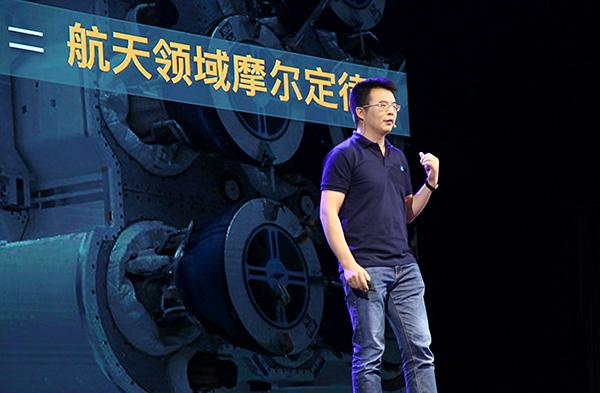Artificial Intelligence Ethical Crisis: Multidimensional Reflection Aroused By Columbia University Students' Remote Interview Cheating Incident
Artificial Intelligence Ethical Crisis: Multidimensional Reflection Aroused By Columbia University Students' Remote Interview Cheating Incident
1. Event background: Technology abuse subverts the traditional talent selection mechanism
1. Event background: Technology abuse subverts the traditional talent selection mechanism
In the fall of 2023, the "Coder" company founded by "Roy" Lee, a computer science student at Columbia University, caused a shock in the global technology community. This startup company, which claims to "make technical interviews more efficient", has essentially built a complete AI cheating industry chain: through real-time screen sharing analysis technology, its independently developed system can analyze questions in 0.8 seconds and generate solutions that meet coding specifications; voice enhancement algorithms can filter environmental noise and convey problem-solving ideas to candidates through bone conduction headphones; it also uses computer vision technology to forge natural eye movements, and can even simulate the rhythm of keyboard typing to avoid monitoring of behavioral analysis systems. This systematic cheating method caused the pass rate of junior engineer jobs in Meta and other companies to soar by 47%. In the end, an interviewer discovered the code projection interface in the reflection of the candidate's glasses.
2. Technical Confrontation: The arms race between cheating and anti-cheating
Currently, AI cheating technology has formed three major breakthrough directions:
Multimodal information transmission system: Use micro bone conduction equipment and smart glasses to convert text information into specific frequency vibration signals, and realize hidden information transmission with AR projection. The company's anti-cheating team found that the working frequency bands of certain devices have exceeded the human hearing range and need to be identified with a radio frequency detector.
Deep forgery behavior pattern: an architecture-based behavior simulation system that can learn interview videos of thousands of outstanding engineers and generate micro-expressions, gestures and language patterns that match personality traits. Deloitte's AI monitoring system found that the standard deviation of cheaters' blink frequency is only 1/3 of that of normal people, exposing excessively regular behavioral characteristics.
Dynamic code obfuscation technology: Coder's patented technology can automatically insert random comments and format changes during the code generation stage, so that similar solutions submitted by different candidates can pass surface differential review. The code fingerprint system has less than 12% detection accuracy.
Anti-cheating technology has been upgraded and iterated:
The system developed by Microsoft can identify AR projection points at the 0.1mm² level through pupil contraction mode and corneal reflex analysis, with an accuracy of 89%.
The latest paper from Google Research Institute shows that its multimodal detection model MUM-3 combines voiceprint analysis, keyboard dynamics and code semantic networks to mark suspicious objects within 8 minutes after the interview starts, and the false alarm rate is controlled within 2%.
Amazon AWS launches a service that disables the clipboard function in a cloud-isolated encoding environment and randomly inserts invisible watermark variables. Any external code paste will trigger an exception alert.
3. Paradigm transfer of enterprise response strategies
The human resources strategy of top tech companies is undergoing structural adjustments:
Evaluation system reconstruction: IBM took the lead in introducing the "adversarial interview" model, requiring candidates to modify an AI-generated code containing deliberately implanted vulnerabilities within 30 minutes, and answer randomly pop-up system design questions. This stress test increases the cheater's knowledge fault rate to 76%.
Physical space reconstruction: Goldman Sachs transforms the 32nd floor of Manhattan headquarters into an intelligent monitoring center, equipped with millimeter-wave radar detection electronic equipment, and the interview desk integrates a biological electrode array to monitor the matching degree of skin electrical activity and cognitive load. The cost of offline trials increased by 220% compared with before the epidemic, but the quality index of recruitment for senior positions rebounded by 41%.
Legal means upgrade: The company has added "algorithm transparency clause" to the new employee contract, requiring disclosure of the overlap between the training data set and the interview question bank, and the maximum compensation of 300% of the annual salary can be recovered. In the first lawsuit, a Stanford graduate was held accountable for concealing his use records.
IV. Ethical Dilemma of Higher Education Institutions
Details of the investigation disclosed by the Columbia University Discipline Committee show that Lee's prototype of the cheating system actually originated from his course project "Smart Interview Aid Tool". This exposed three major loopholes in computer education:
There is a lack of technical ethics module in the course design, and 82% of the top 50 colleges and universities have not included AI social impact in compulsory courses.
The academic integrity policy is lagging behind, and the existing clauses do not clearly distinguish the boundaries between "false use of IDE" and "real-time acquisition of external intellectual support".
The orientation of entrepreneurial education is biased, and the review of science and technology ethics is useless in the incubator project. Lee's entrepreneurial plan won the gold medal in the school-level innovation competition, and the review team selectively ignored its technical details.
MIT has launched a "responsible innovation" certification system to this end, requiring all technical entrepreneurial projects to be defended by an ethical review committee composed of philosophers, legal experts and sociologists. Cambridge University has developed an "algorithm traceability" system to analyze students' code assignments and detect external intellectual dependence.
V. Global Challenges of Technical Ethics
The chain reaction caused by the incident is far beyond the field of education:
The technological equality paradox: The Nigerian Developers Alliance protests that the ban on AI aids has essentially maintained the advantages of the elite. Statistics show that the interview pass rate of non-native candidates using basic tools such as non-native job seekers has increased by 33%, and the comprehensive ban may exacerbate the technical gap.
Fuzzy intellectual property boundaries: The US Patent Office recently rejected Coder's three patent applications, deciding that it "combining public algorithms for deceptive purposes" is not in line with the principle of practical ethics, which sets a new precedent for AI technology patent applications.
Geotechnical competition: The EU quickly passed the Trusted AI Interview Convention, requiring all member states to have built-in detection modules for recruitment systems. Silicon Valley venture capital continues to inject capital into the AI interview auxiliary field. In 2023, the financing amount of the track increased against the trend to US$1.87 billion, highlighting the differences in values.
6. Build a new talent assessment ecosystem
Multiple stakeholders are exploring ways to break the deadlock:
Dynamic capability assessment model: Carnegie Mellon University jointly developed the CTF (Task) system. Each programming task will derive hundreds of variant versions and adjust the difficulty curve in real time according to the candidate's performance, making memory cheating invalid.
Decentralized credit system: The project launched by the Linux Foundation records the problem-solving process of developers based on blockchain, forming an irreversible ability growth trajectory. Early experiments showed that process evaluation increased recruitment matching by 58%.
Human-computer collaborative interviewer: Pilot the hybrid intelligent interview system Hire, AI is responsible for code logic review, human experts focus on in-depth dialogue of system design thinking, and the weighted scores of the two make the evaluation dimension more three-dimensional.
7. Future Outlook: Finding a Balance Between Innovation and Supervision
This technological ethical crisis reveals the fundamental contradiction in talent selection in the digital age: when knowledge acquisition becomes democratized, the traditional ability assessment system will inevitably fail. The Center for Technology and Social Research at Princeton University predicts that by 2028, 60% of technical positions will adopt the "continuous capability verification" model, replacing one-time interviews with regular micro-certification updates. The World Economic Forum calls for the establishment of a global "digital skills passport" that integrates academic qualifications, project experience and ethical certification into verifiable credit units.
In an era of technology rush, this incident is like a wake-up call: the ultimate goal of education should not be to cultivate smarter cheaters, but to shape responsible innovators who can control technology. As Dava, director of MIT Media Lab, said: "We need to implant humanity in code, not just code in human nature." This offensive and defensive battle of AI ethics will eventually promote humanity to redefine the fairness and excellence in the intelligent era.





